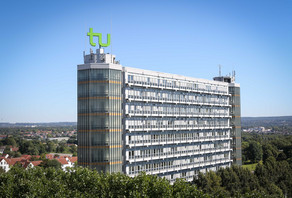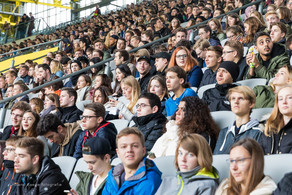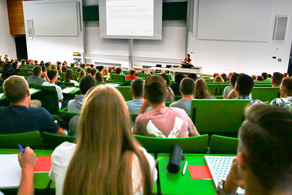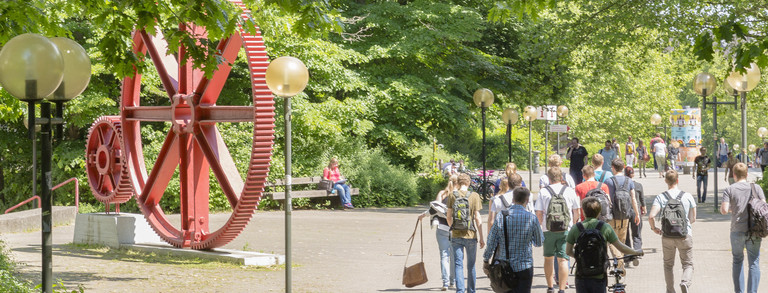Ab Sommer 2025 ist es möglich, den Studiengang im Sommer- und Wintersemester zu beginnen.
Master Econometrics
Übersicht
Ökonometrie ist ein zweijähriger Masterstudiengang, der gemeinsam von der TU Dortmund, der Ruhr-Universität Bochum und der Universität Duisburg-Essen angeboten wird. Der Studiengang richtet sich an quantitativ orientierte Studierende, die einen Bachelor-Abschluss in Ökonometrie, Statistik, Mathematik oder verwandten Disziplinen haben. Ökonometrische Methoden gewinnen in der Forschung, der Wirtschaft und im öffentlichen Sektor zunehmend an Bedeutung. Studierende der Ökonometrie sind in der Lage, mathematische Modelle zur quantitativen Beschreibung und Analyse von Problemen einzusetzen, die in Unternehmen, Forschung, Regierung, Finanzinstituten und anderen Organisationen auftreten. Sie verfügen über ein umfassendes Verständnis statistischer Methoden und ein vertieftes Wissen über zentrale ökonomische Kausalzusammenhänge und die daraus resultierenden ökonometrischen Fragestellungen.
Alle Pflichtkurse und ein Großteil der Wahlfächer werden in englischer Sprache unterrichtet.
Struktur des Studiengangs
Das Programm besteht aus fünf Kern- und vier Wahlmodulen, einschließlich einer sechsmonatigen Masterarbeit. Die meisten Module bestehen aus mehreren Kursen, die je nach den individuellen Interessen der Studierenden gewählt werden können. In den Kernkursen werden Schlüsselkonzepte der statistischen Theorie, Ökonometrie und Zeitreihenanalyse vermittelt. Das Kerncurriculum vermittelt auch Fähigkeiten in Projektmanagement, Beratung und angewandter Forschung. Ein großes Angebot an Wahlfächern und Spezialseminaren ermöglicht es den Studierenden, ihr Wissen in ausgewählten Bereichen der ökonometrischen Theorie und der angewandten Wirtschaftsforschung zu vertiefen, z.B. in der Gesundheitsökonomie oder der Finanzökonometrie.
Perspektiven
Die Absolventen sind gut vorbereitet für eine weitere Karriere in der Ökonometrie, empirischen Wirtschaftsforschung und evidenzbasierten Politikberatung. Studierende, die eine akademische Laufbahn anstreben, werden bei der Entwicklung analytischer Fähigkeiten unterstützt, die auf spezifische Forschungsfragen zugeschnitten sind. Der Studiengang bereitet somit optimal auf eine Promotion in Ökonometrie oder verwandten Disziplinen vor.
Zulassungsvoraussetzungen
Weitere Informationen zu den Voraussetzungen für das Programm finden Sie hier.
Wichtige Dateien und weitere Informationen
Die Zulassung zum Masterstudiengang ist nur möglich, wenn bestimmte Voraussetzungen erfüllt sind. Diese Zulassungsvoraussetzungen und weitere Informationen zur Immatrikulation finden Sie hier.
- Website zum Programm
- Prüfungsordnung
- Ergänzungen zur Prüfungsordnung, vom Wintersemester 2021/22
- deutsche Version (rechtsverbindlich) der Prüfungsordnung
- deutsche Version (rechtsverbindlich) der Ergänzungen zur Prüfungsordnung, vom Wintersemester 2021/22
- Modulhandbuch M.Sc. Econometrics (zuletzt aktualisiert am 29.01.2025)
- Zusatzvorraussetzungen Modulhandbuch (zuletzt aktualisiert am 14.11.2022)
- Empfohlener Studienverlaufsplan M.Sc. Econometrics (Start im Winter)
- Empfohlener Studienverlaufsplan M.Sc. Econometrics (Start im Sommer)
- Infos Externe Praktika
- Affidavit (Notwendig! Muss Ihrer Masterarbeit beigefügt werden)
- Ergänzung des Affidavits (Auch notwendig! Bezieht sich auf die Verwendung von IT-/AI-gestützten Sprachmodellen. Soll auch Ihrer Masterarbeit beigefügt werden)
- Liste positiver Beispiele (Liste positiver Beispiele für den Einsatz IT-/AI-gestützter Sprachmodelle bei der Erstellung von Abschlussarbeiten)
Hinweis: Maßgeblich sind jeweils die Studienbedingungen; der empfohlene Studienverlaufsplan stellt nur eine Möglichkeit dar.
Nützliche Links für Ökonometrie-Studenten
- Liste hilfreicher Links (Moodle, Vorlesungsverzeichnisse, Fachbereichshomepages etc.)
- Info Moodle Raum (Einschreibung für alle Ökonometrie-Studenten dringend empfohlen)






